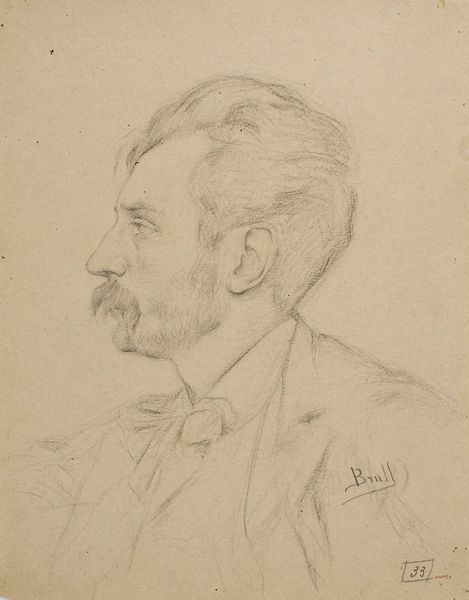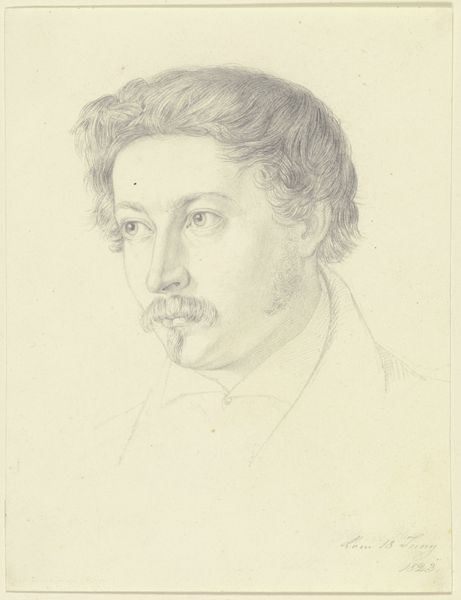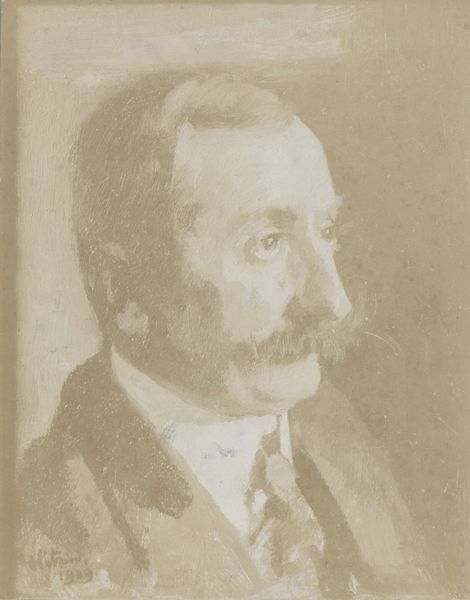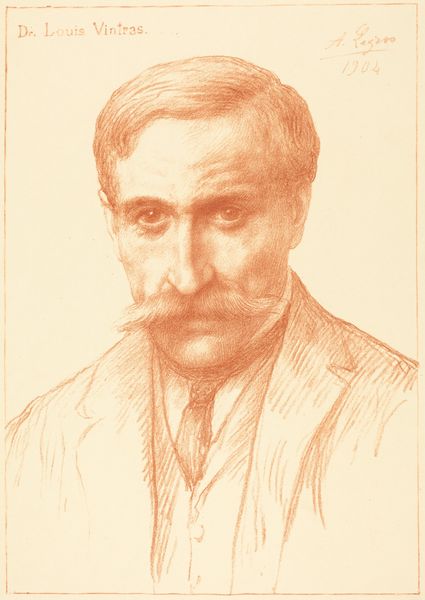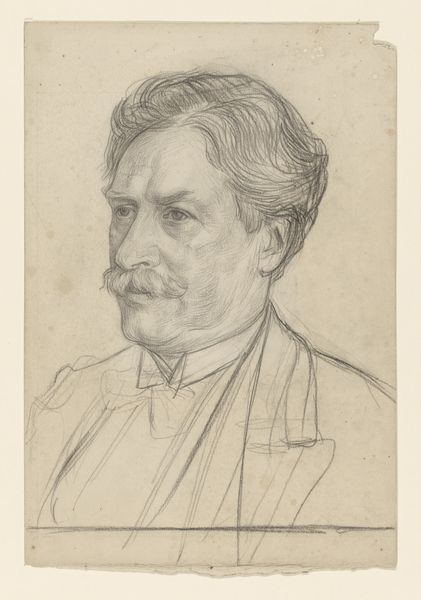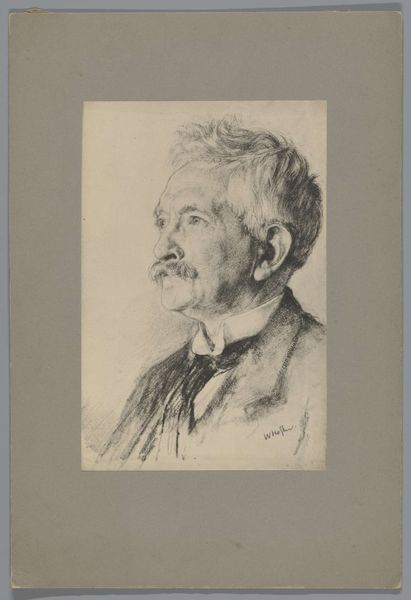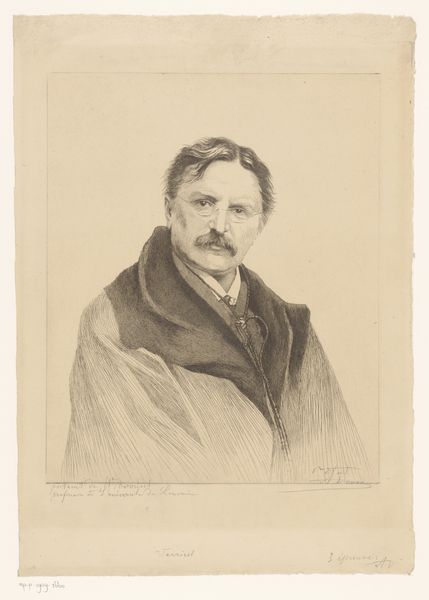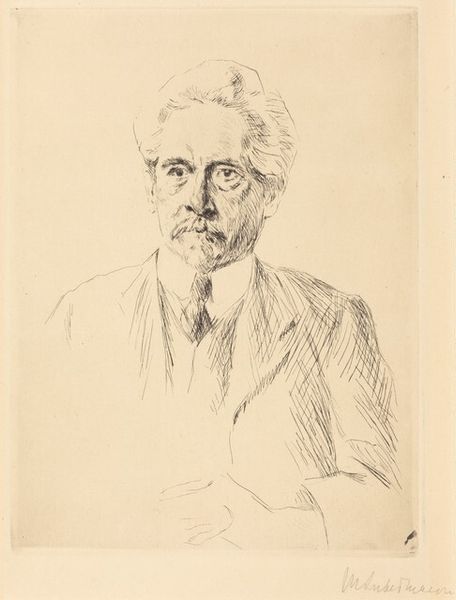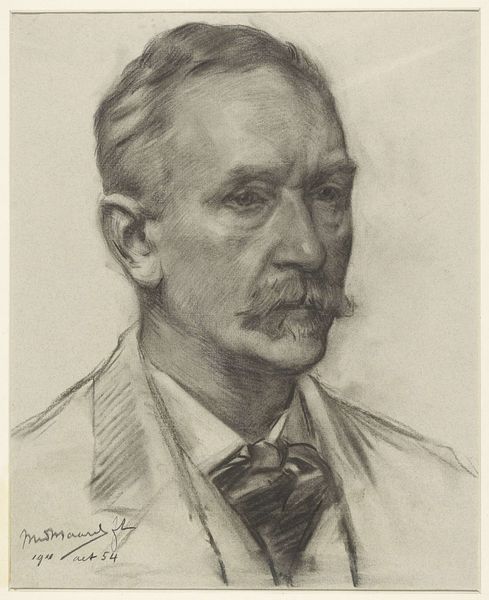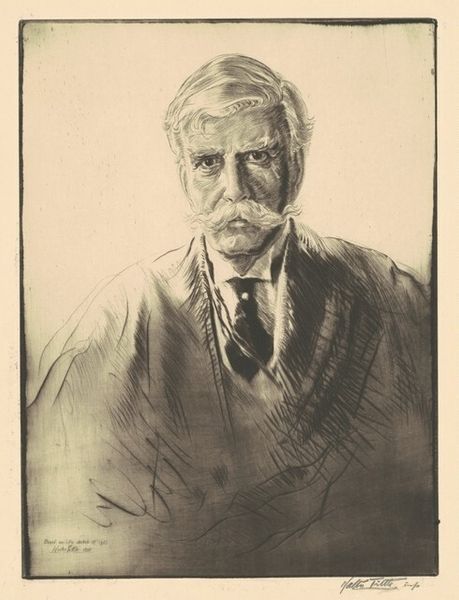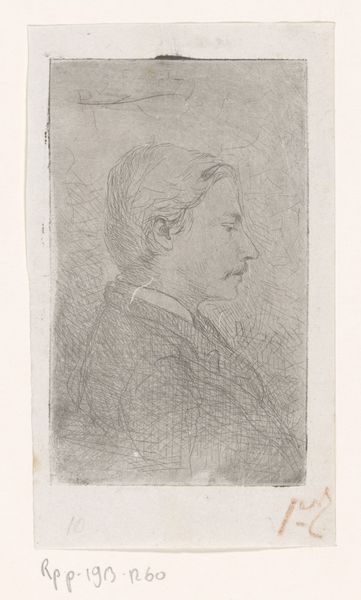
drawing, charcoal
#
portrait
#
pencil drawn
#
drawing
#
toned paper
#
pencil sketch
#
charcoal drawing
#
pencil drawing
#
portrait drawing
#
charcoal
#
realism
Dimensions: height 525 mm, width 405 mm
Copyright: Rijks Museum: Open Domain
Curator: Before us is Thérèse Schwartze's "Portret van de heer van Duyl," likely created between 1861 and 1918, a compelling portrait drawing held here at the Rijksmuseum. Editor: My initial impression is of delicate restraint; the sitter's composed expression contrasts with the energetic hatching of the pencil and charcoal work. It feels both formal and immediate. Curator: I agree. Schwartze was a master of portraiture, but examining her materials—the toned paper, the precise use of charcoal and pencil—reveals much about the context of production. It allows us insight into artistic labor. Consider how readily available and economical drawing media would have made portraiture accessible to a wider clientele beyond painted commissions. Editor: Indeed. The strategic deployment of line and tone sculpts van Duyl's features, emphasizing the play of light across his face and clothing. The hatching is more than just practical—it gives the composition a palpable energy that complements the man's evident self-possession. Note also the carefully rendered details: the glint of his spectacles, the texture of his mustache, each reinforcing a very specific image. Curator: And beyond aesthetics, portraiture of this era served a crucial function: solidifying social standing and familial memory within the emerging bourgeois class. Who commissioned the piece and its place in van Duyl's personal history becomes as integral as the image itself. Editor: Yet we must consider also the artistic choices beyond the social context. How Schwartze utilizes a restricted palette enhances the inherent character of the sitter and emphasizes the formal aspects of the composition and lines within. There's a structured approach here. Curator: Definitely. In Schwartze’s era, new industries mass-produced artist's materials like paper and charcoal, affecting their widespread use and even their perception in society and how that impacts the economics of portraiture during the 19th century. It created accessibility, as the means of creating, seeing and remembering were brought together. Editor: It seems we can both appreciate this portrait for both its compelling structure and how it relates to art history!
Comments
No comments
Be the first to comment and join the conversation on the ultimate creative platform.
